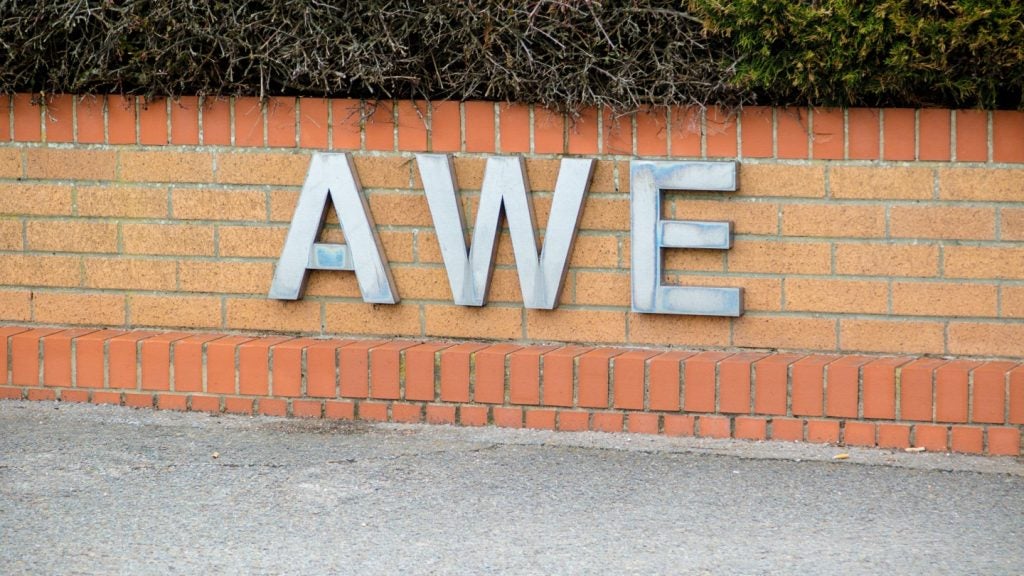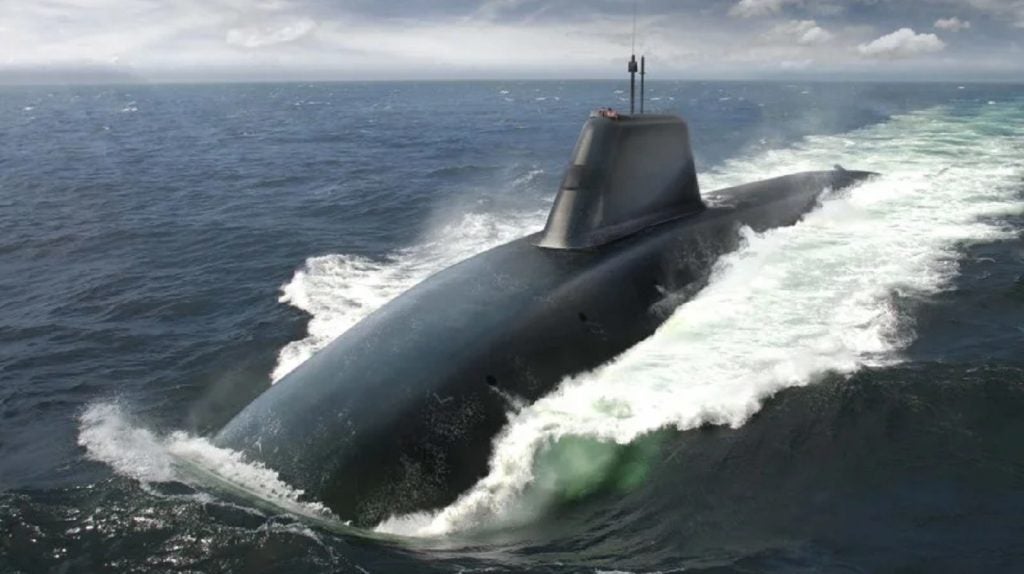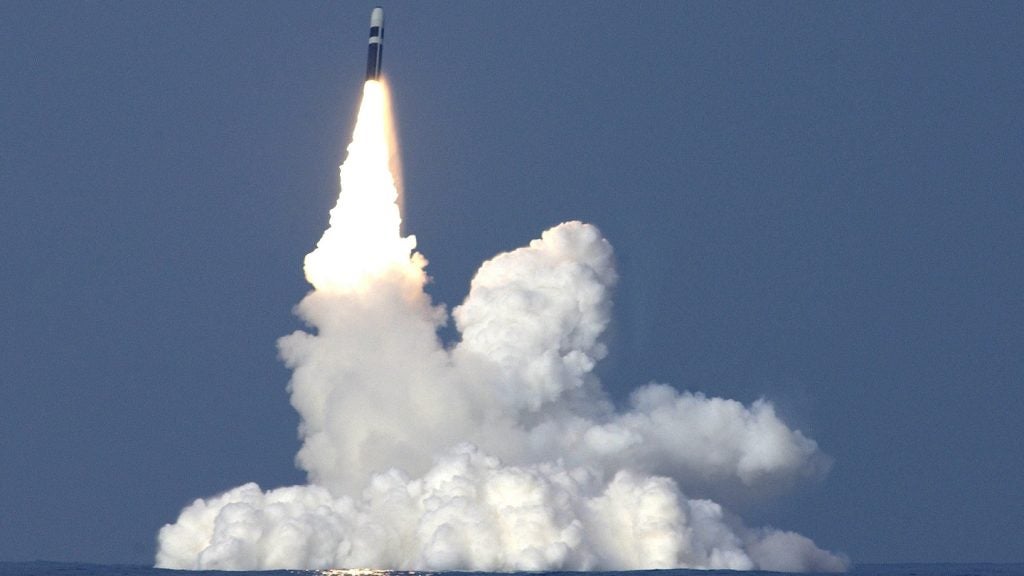
As UK defence prime Babcock announces a contract for a deep maintenance and life extension (LIFEX) process for the nuclear-powered ballistic missile submarine (SSBN) HMS Victorious, parallel programmes are also running that will introduce an entirely new nuclear weapons capability to the Royal Navy.
Revealing the estimated £560m ($707m) LIFEX programme with the UK Submarine Delivery Agency (SDA) on 1 March, the upgrade to HMS Victorious, one of four Vanguard-class SSBNs in service with the Royal Navy, will see the vessel continue “well into the 2030s”.
The cost of HMS Victorious’ maintenance is significantly more than the work carried out to HMS Vengeance, which underwent a refit from March 2012 to February 2016 at a cost of £322m and included a refuel of the boat’s reactor and update to its electronics and machinery.
HMS Victorious is the second Vanguard-class submarine to undergo a LIFEX package at Babcock’s Devonport facility, which itself is undergoing an extensive modernisation programme that includes improvements to submarine sustainment facilities, including the ability to defuel decommissioned nuclear-powered submarines.

Likely home for at least the next four years, 5 Basin at Babcock’s Devonport Royal Dockyard houses HMS Victorious, which will require 7.2 million personnel hours of work to be carried out in order to provide a third and final commission for the vessel before it leaves service.
HMS Victorious will see upgrades to 90% of its systems, including the combat management system, as part of its complex LIFEX programme.
How well do you really know your competitors?
Access the most comprehensive Company Profiles on the market, powered by GlobalData. Save hours of research. Gain competitive edge.

Thank you!
Your download email will arrive shortly
Not ready to buy yet? Download a free sample
We are confident about the unique quality of our Company Profiles. However, we want you to make the most beneficial decision for your business, so we offer a free sample that you can download by submitting the below form
By GlobalDataThe first in class, HMS Vanguard, sailed out of Devonport in mid-2023 after a delayed seven-year long LIFEX programme that included a refuelling of its nuclear reactor. It is understood that the reactor of HMS Victorious will not be refuelled during its upcoming multi-year stay in 5 Basin and 9 Dock.
Once the LIFEX of HMS Victorious is completed, Boat 3 (HMS Vigilant) will take its place for its own refit.
Dreadnought class: the Vanguard replacement submarines
Meanwhile, in October 2023 the UK Royal Navy announced that construction of the largest segment of the future HMS Dreadnought – lead boat of a new class of ballistic missile submarines – had been completed at the BAE Systems submarine yard in Barrow-in-Furness, Cumbria. The new class will replace the current Vanguard SSBNs in Royal Navy service.
BAE Systems was originally contracted in 2012 to begin its initial design of the four future SSBNs – Dreadnought, Warspite, Valiant and King George VI – and another detailed design task in 2015.
Upon completion, the Dreadnought-class will become the Royal Navy’s largest submarines, with a length of 153.6 metres and displacement of 17,200 tonnes.

To date, four successors will be built, of which Dreadnought leads the way, ahead of HMS Warspite and Valiant (also under construction), with work yet to start on Boat No. 4, HMS King George VI.
The four boats will replace the incumbent Vanguard class and thought to feature new technologies derived from the new Astute-class nuclear-powered attack submarines, including a new pressurised water reactor design.
Speaking in January 2024, UK Defence Procurement Minister James Cartlidge stated that the Dreadnought programme remained “on track” to replace the Vanguard class, at a cost “within the original £31bn plus £10bn contingency budget made in the Strategic Defence and Security Review 2015.”
UK upgrading its Mk4/A ‘Holbrook’ nuclear weapons
While the LIFEX processes of the Vanguard class and the ongoing build of the new Dreadnought boats are well understood, the UK Government has been engaged in secretive work to develop a new type of nuclear warhead that will form the centrepiece of the country’s nuclear deterrent.
Each of the Vanguard-class SSBNs can each carry up to 16 Trident II D5 ballistic missiles, which contain up to eight multiple independent targetable re-entry vehicles (MIRVs) housing Mk4/A ‘Holbrook’ nuclear warheads with a yield of up to 100 kilotons. The new Dreadnought class will be able to accommodate 12 Trident II D5 missiles.
The nuclear weapon dropped on Nagasaki, Japan, during WW2 had a reported yield of 25 kilotons.
The UK maintains its nuclear warheads at Atomic Weapons Establishment (AWE) Aldermaston and Burghfield in Berkshire, west of London, with the sites in 2020 announced that they would be brought back into UK Government control from a consortium led by US defence prime Lockheed Martin.
In 2021, the UK announced that it would increase the number of nuclear warheads in stock, from around 225 currently to about 260. The UK’s current warheads are claimed to be of a UK design, but thought to be derived from the US-origin W76 weapon.

An unexpected outing also in 2020 by a senior US Navy official, speaking to the US Senate, of a joint US-UK nuclear warhead upgrade initiative called the W93/Mk7, prompted the then UK Secretary of State for Defence Ben Wallace to confirm the existence of a UK warhead replacement programme.
The new UK warhead will be designed, developed, and manufactured in the UK and housed in the US Mk7 aeroshell, which will house the planned W93 warhead. The Mk7 aeroshell will be procured from the US along with some other non-nuclear components under existing nuclear treaty arrangements, stated a 2023 UK parliamentary report.
Although relatively little is known about the potential costs of crating a new nuclear warhead, it is thought that the UK could spend up to £4bn on the programme.
In February 2024, it was revealed that the UK tests of the Trident II D5 ballistic missile weapon system off the US east coast had suffered a second successive failure, raising questions about the viability of the UK’s nuclear deterrent.







